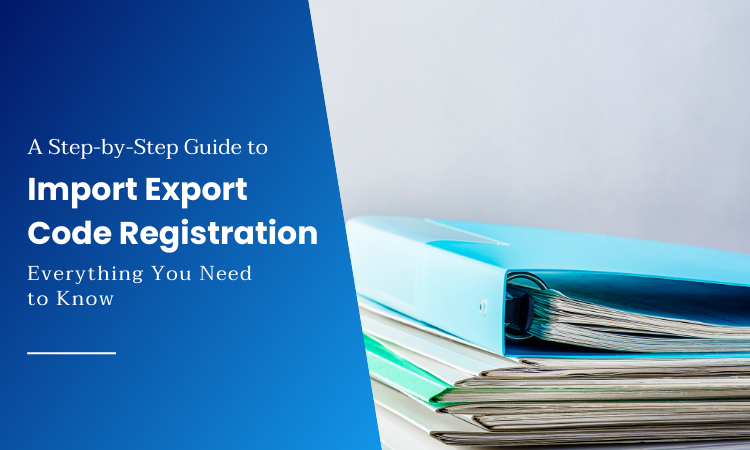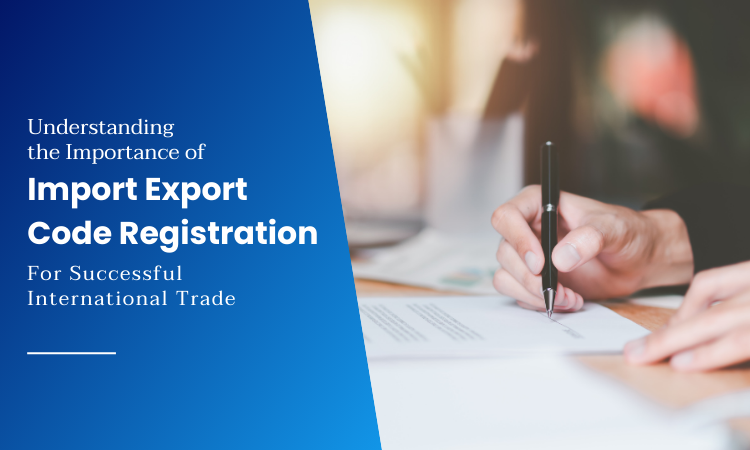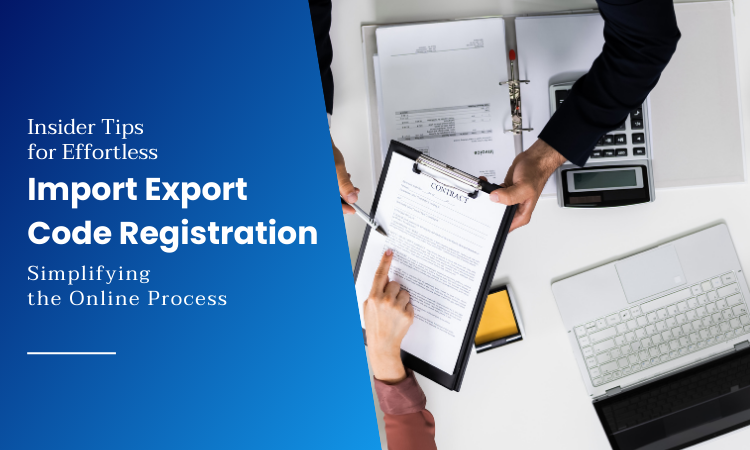
In today’s global market, import and export services play a pivotal role in shaping the success of businesses. However, before embarking on international trade ventures, obtaining the essential Import Export Code (IEC) Registration is crucial. This comprehensive guide offers expert insights into the process of IEC code application and online registration, empowering businesses to navigate the intricacies of global trade with confidence and efficiency. So, let’s delve into the world of import-export compliance and unlock boundless growth opportunities.

Embarking on the journey of international trade requires meticulous planning, and a crucial step in this process is obtaining an Import Export Code (IEC). This code serves as a unique identifier for businesses engaged in import and export services, facilitating seamless transactions across borders. In this step-by-step guide, we delve into the essential aspects of IEC registration, demystifying the process for a smoother entry into the world of global commerce.
The key phrase, “import export code registration,” signifies the significance of obtaining an IEC for businesses involved in import and export services. This code is mandatory for international trade, enabling smooth customs clearances and fostering trust among global partners.
The key phrase, “iec registration online,” highlight the convenience of applying for an IEC code digitally. The process typically involves submitting the required documents, such as PAN card, Aadhar card, and bank details, through an online portal. This streamlined approach expedites the registration process.
Before initiating the IEC code application, ensure all necessary documents are in order. This includes proof of identity, address, and bank details. A systematic approach to document preparation is essential for a hassle-free registration process.
Navigate to the official portal for IEC registration and submit the required information. The online application process simplifies the submission of documents, making it accessible for businesses of all sizes.
Once the application is submitted, it undergoes verification by the Directorate General of Foreign Trade (DGFT). Upon successful verification, the IEC code is issued, and businesses are officially authorized to engage in import and export services.

Embarking on the exciting journey of international trade? Buckle up, because navigating the world of imports and exports requires careful preparation. One crucial step in ensuring a smooth and successful operation is obtaining your Import Export Code (IEC). Think of it as your passport to global commerce, opening doors to a world of opportunities.
Issued by the Directorate General of Foreign Trade (DGFT) in India, the IEC is a unique 10-digit code that identifies your business as a legitimate player in international trade. It’s mandatory for any entity, individual or organization, seeking to import or export goods or services.
Beyond just being mandatory, IEC registration offers several advantages:
The process is relatively straightforward:
Navigating international trade can be complex. Consider seeking assistance from experienced import & export services to ensure a smooth IEC registration process and compliance with regulations. With the right guidance and your IEC in hand, you’re well on your way to conquering the world of international trade!

The world is your oyster! But to truly dive into the vast ocean of international trade, you’ll need your pearl: the Import Export Code (IEC). This 10-digit magic number, issued by the Directorate General of Foreign Trade (DGFT) in India, unlocks a treasure trove of global opportunities for your business. Let’s explore how to obtain your IEC and leverage it to boost your success.
Think of your IEC as a business passport. It identifies you as a legitimate player in international trade, opening doors to:
The IEC registration process is relatively straightforward:
With your IEC in hand, it’s time to set sail and explore the exciting world of international trade:

The world of international trade beckons, but before you set sail, there’s one crucial step: securing your Import Export Code (IEC). This 10-digit gateway to global opportunities might seem daunting, but fear not! With these insider tips, navigating the online IEC registration process will be a breeze.
The Import Export Code (IEC) is your passport to the world of international trade in India. Obtaining it online might seem straightforward, but pitfalls lurk around the corner, potentially delaying your journey. Let’s navigate these roadblocks and ensure a smooth IEC registration process:
1. Inaccurate or Incomplete Information: Double-check every detail you enter in the online application form. Typos, inconsistencies, or missing information can lead to rejections and processing delays.
2. Incorrect Document Selection: The DGFT website offers various IEC categories. Choosing the wrong one based on your business activity can cause complications and require resubmission.
3. Scanned Document Woes: Ensure all scanned documents are clear, legible, and in the specified format. Blurry images or incorrect formats can lead to rejections, wasting valuable time.
4. Payment Mishaps: Technical glitches happen. Have a backup payment method ready in case online payment fails during submission. Double-check payment details before finalizing.
5. Forgetting: Bookmark the application reference number and website link for easy tracking. Delays can occur, so follow up periodically if your IEC hasn’t arrived within the expected timeframe.
6. Ignoring Regulation Updates: IEC registration procedures and document requirements can change. Stay updated by regularly checking the DGFT website to avoid unnecessary hurdles.
7. Going Solo When Unsure: Don’t be afraid to seek help! If you’re unsure about any aspect of the process, consider consulting experienced import & export service providers. Their expertise can save you time and ensure a smooth registration.
8. Rushing the Process: While speed is desirable, prioritize accuracy. Rushing through the application or submitting incomplete documents can lead to rejections and delays, ultimately taking longer than a careful approach.
9. Neglecting Professional Guidance: Complexities can arise, especially for first-time applicants. Consider partnering with import & export services for tailored assistance. They can navigate regulations, ensure compliance, and handle technical issues, saving you time and stress.
10. Ignoring Security: Online transactions require vigilance. Protect your data by using secure internet connections and avoiding public Wi-Fi while submitting your application and making payments.